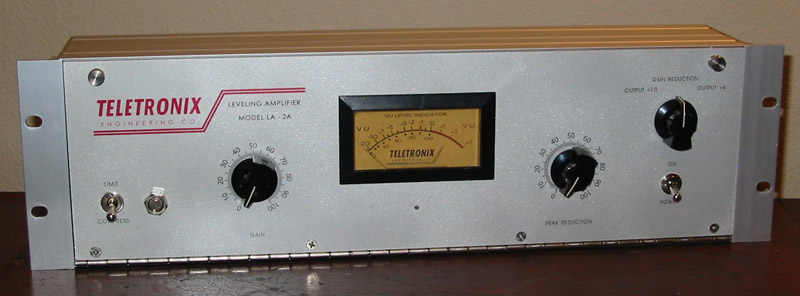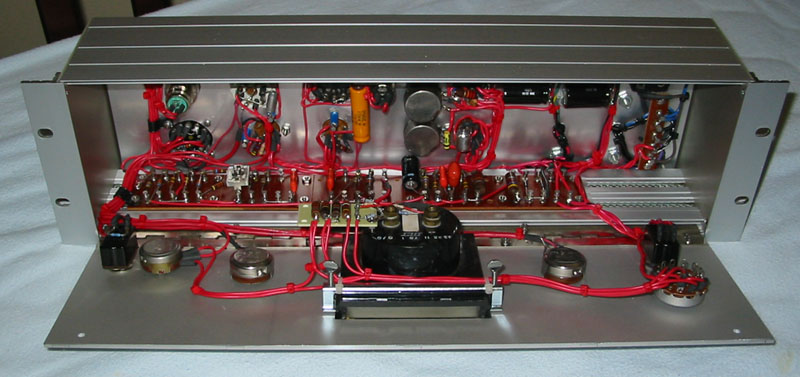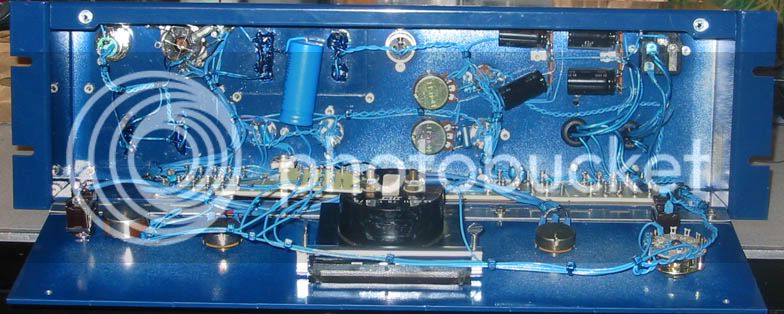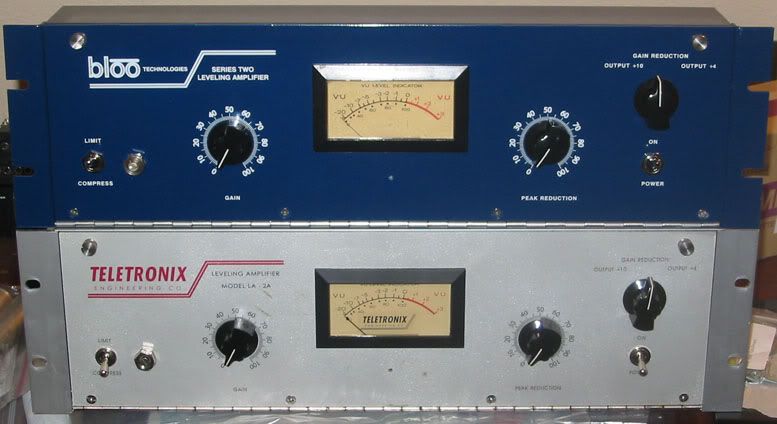[quote author="mikep"]wow keith. could you post more hints/info about tweaking those resistors? and maybe a quick schematic? it seems like this might be a good option for higher volume production or even group DIY. you only have to skin the cat once and then the difference in price per unit becomes significant.[/quote]
Well, I only found ONE Beede meter of the correct size and shape. The current rating, the impedance and the ballistics would mean that any other meter would need CONPLETELY different values, but it's basically a low-drop bridge rectifier, then a potential divider formed by a series resistor and a shunt resistor to desensitise the over-reading meter. Now that makes the total resistance/impedance too high (compared to the impedance of a typical VU meter) so you have to add a second overall shunt resistance inside the bridge to make it match.
I compared it to meters by Beede (in an original LA2a), Modutec, Sifam, Triplett and a couple of other brands. With the exception of Beede there were several models from each brand, all read
slightly differently, so I aimed for the middle of the pack, biased slightly to the Beede for 'sentimental' reasons.
Now, you could just use a lower overall resistance potential divider network, but the shunt part tends to damp the meter movement, slowing it and affecting the overshoot characteristics, making things appear to have been dipped in molasses, so you find values which are too lively then reduce until it looks closer. THEN you add the overall shunt (vital to make the relation ship between the 3.6K series impedance (for +4dB operation in an LA-2a) and the additional 6.8K series resistance (for +10dB operation) otherwise the switch doesn't work right. -Then you notice that the overall shunt is slightly slowing the needle motion, which is why you leave it a little fast before you add the overall shunt. You may have to re-do the potential divider network to adust the ballistics. Then you have to recalculate the overall shunt... rinse and repeat
ad frustratum maxima.
Circuit is easy. Parts are cheap. Job is a headache. ...and you simply HAVE to have a few VU meters close at hand to swap-in and compare readings, behaviour and performance.
That meter started out fairly inexpensive, but ended up taking me many hours to get right.
[quote author="mediatechnology"]Sorry for the interruption here but Keith that's the second time I've seen that pic and it's such a beautiful piece of work I had to "right click save as."[/quote]
heheheh... Thanks Wayne; I'm flattered.
But just in case you think I only work in Red, here's some work from my "blue period":
...and here's them both together:
Yeah.. I get crazy somtimes! :twisted:
Keith



